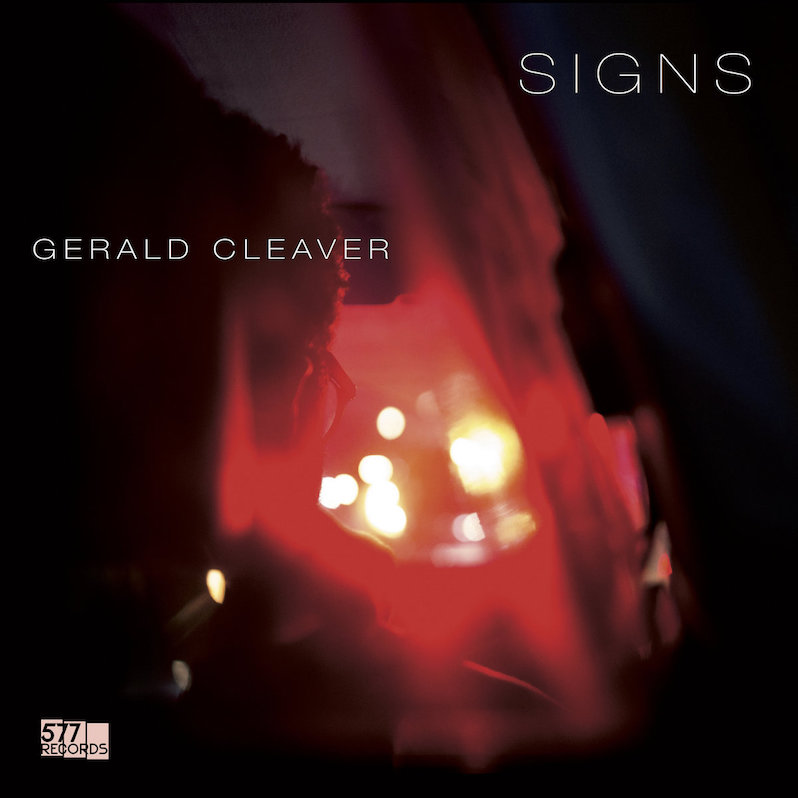Gerald Cleaver : Signs

Gerald Cleaver’s made a name for himself in the realm of contemporary free jazz, his catalog comprising a lengthy list of collaborations with the likes of jazz icons such as Roscoe Mitchell and Charles Gayle, as well as contemporaries Nels Cline, Craig Taborn, Matthew Shipp and William Parker. His drumming technique is powerful and fluid, and his repertoire versatile, frequently veering toward the most free-form improvisation with the occasional foray into ECM-style jazz grace. Signs, his 27th album (depending on how you’re counting), resembles none of his prior records and sounds almost nothing like it was made by the same artist. In fact, his signature instrument—the drumkit—is nowhere to be found on this curious and otherworldly set of music made entirely on synths. It’s not a different side of a familiar artist so much as a step into an entirely different world.
Signs takes its cues not from Cleaver’s own jazz background or inspirations, but by the signature sound of his home city: Detroit. Its innovative history in pioneering techno is infused into the album’s DNA, but its sonic makeup is something different entirely. It’s not an album of traditional techno or anything so straightforward. There’s a pulse, and at its most thrilling moments, yeah, you could probably dance to it (probably?), but true to the outside-the-box thinking of an innovator, Cleaver’s take on electronic music isn’t bound by BPM or even traditional scales. It is, however, uniformly wondrous and breathtaking.
On its face the conceit might sound limiting; an album entirely made with synths and samplers as opposed to the more physical presence of live instruments would tend to remove a crucial element of Cleaver’s sound. The truth is that while it’s functionally different, it’s still endlessly fascinating, emotionally challenging and texturally rich music that’s built on a similar sense of imagination. The rusty, warbling bleeps that open “Jackie’s Smiles” might initially resemble the fiery mbira performances of Konono No. 1, but the track in time opens up into a warm symphony of synthesized majesty. There’s a frantic rush of tones on “Amidst Curses” that feels more connected to Aphex Twin’s Selected Ambient Works Volume 2, and there’s a similar sense of digitized microtonal horror dissonance to oddball epic “Blown.” So, no, this isn’t a jazz record by any stretch of the imagination, but the abandonment of strict adherence to simple, recognizable structures puts it in a similar creative space.
Though every track here shares some commonalities in terms of how they were made, their tones or otherwise, each piece has its own character and unique sense of direction. While it’s one of the shortest tracks, “Tomasz” is one of the most climactic, rising up from bubbling synth tones into an almost orchestral ambience, while the title track trio threads a needle through chaotic techno dystopia (“I”), bluesy loops (“II”) and what sounds like the album’s most straightforward dancefloor banger, of sorts (“III”). It’s an interesting tack that Cleaver takes, putting away the instrument he’s studied and dedicated himself to for decades in order to find new inspiration and unexpectedly revelatory moments. It’s also one that pays off brilliantly, a jazz musician’s unorthodox take on electronic music that feels both fresh and strangely fun.
Label: 577
Year: 2020
Similar Albums:
 Aphex Twin – Collapse
Aphex Twin – Collapse
 rRoxymore – Face to Phase
rRoxymore – Face to Phase
 Laurel Halo – Dust
Laurel Halo – Dust
Jeff Terich is the founder and editor of Treble. He's been writing about music for 20 years and has been published at American Songwriter, Bandcamp Daily, Reverb, Spin, Stereogum, uDiscoverMusic, VinylMePlease and some others that he's forgetting right now. He's still not tired of it.

